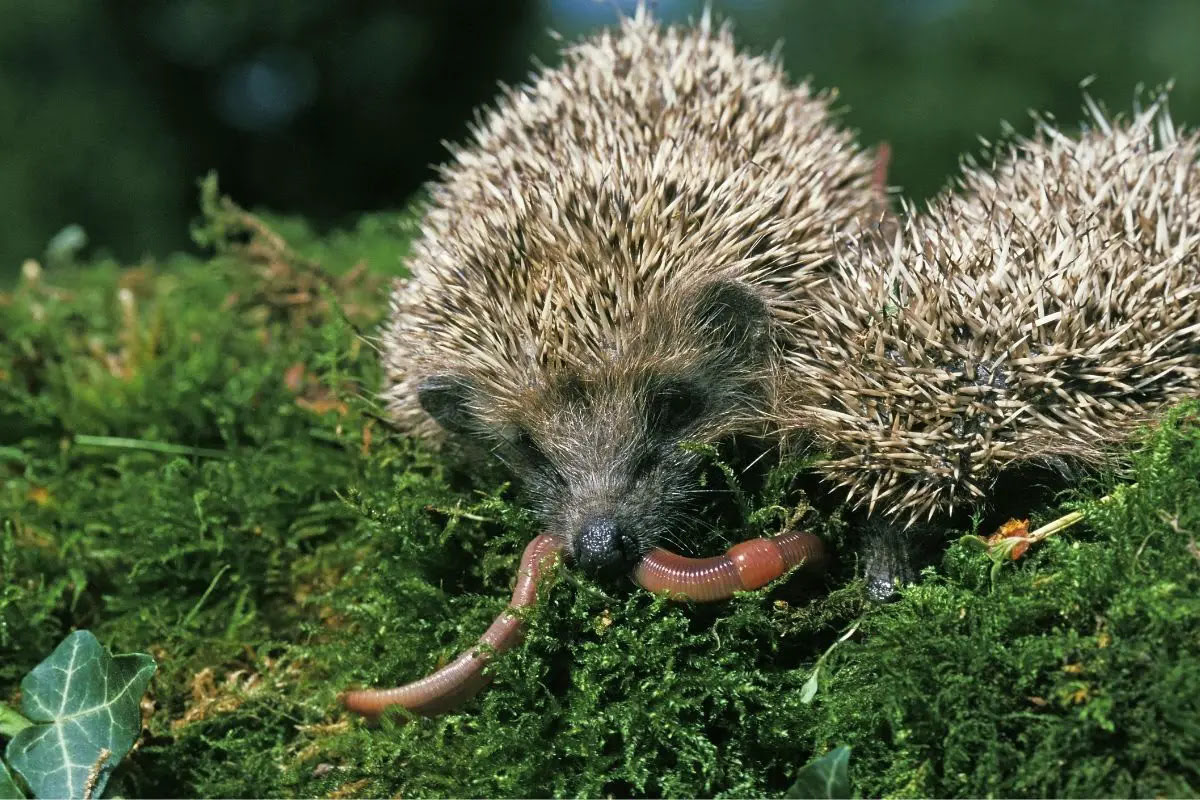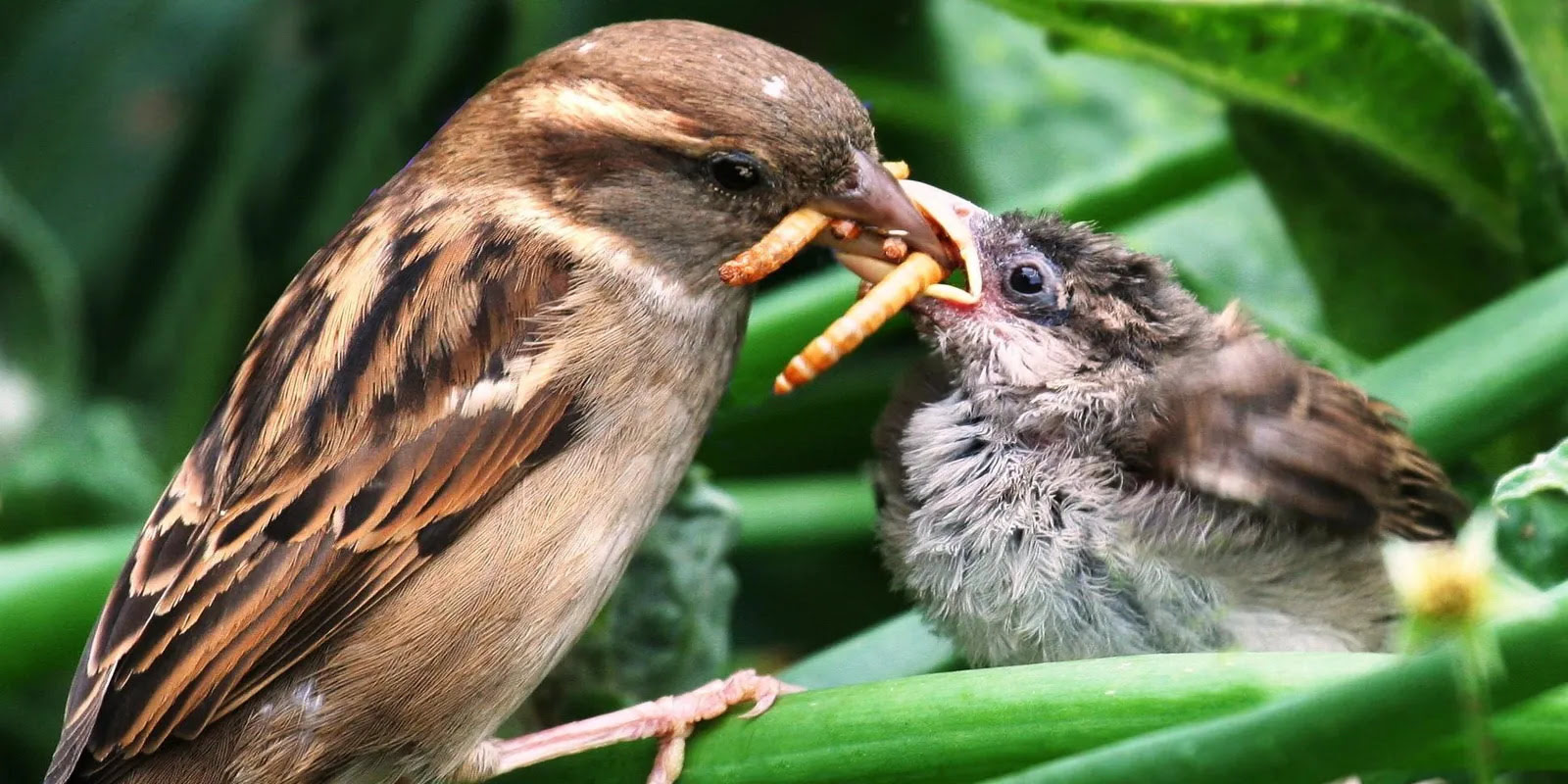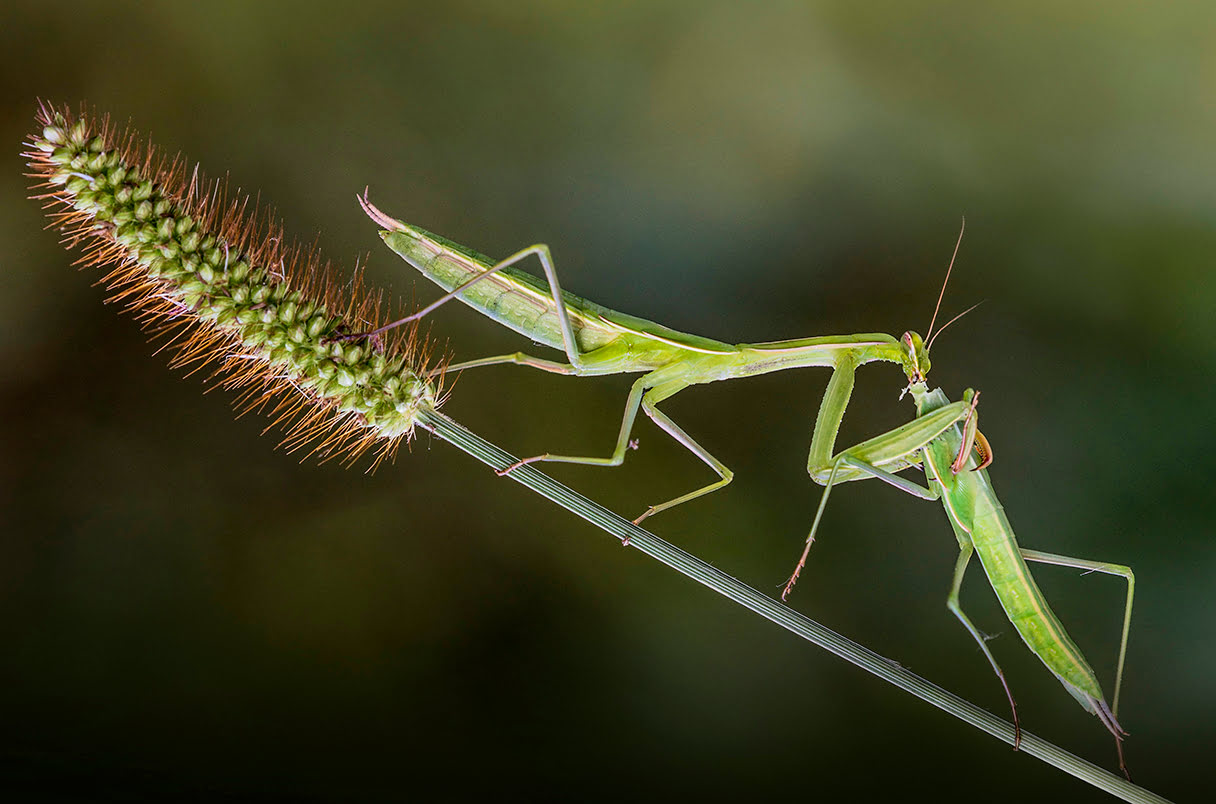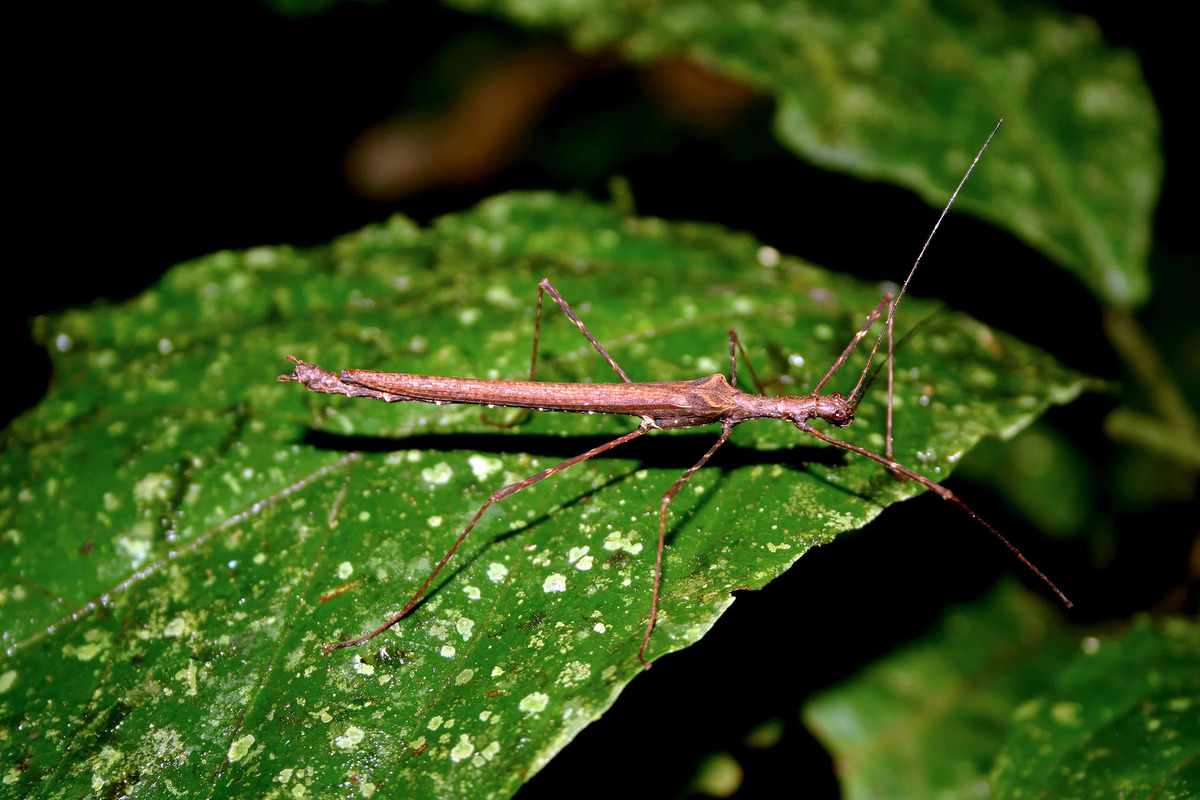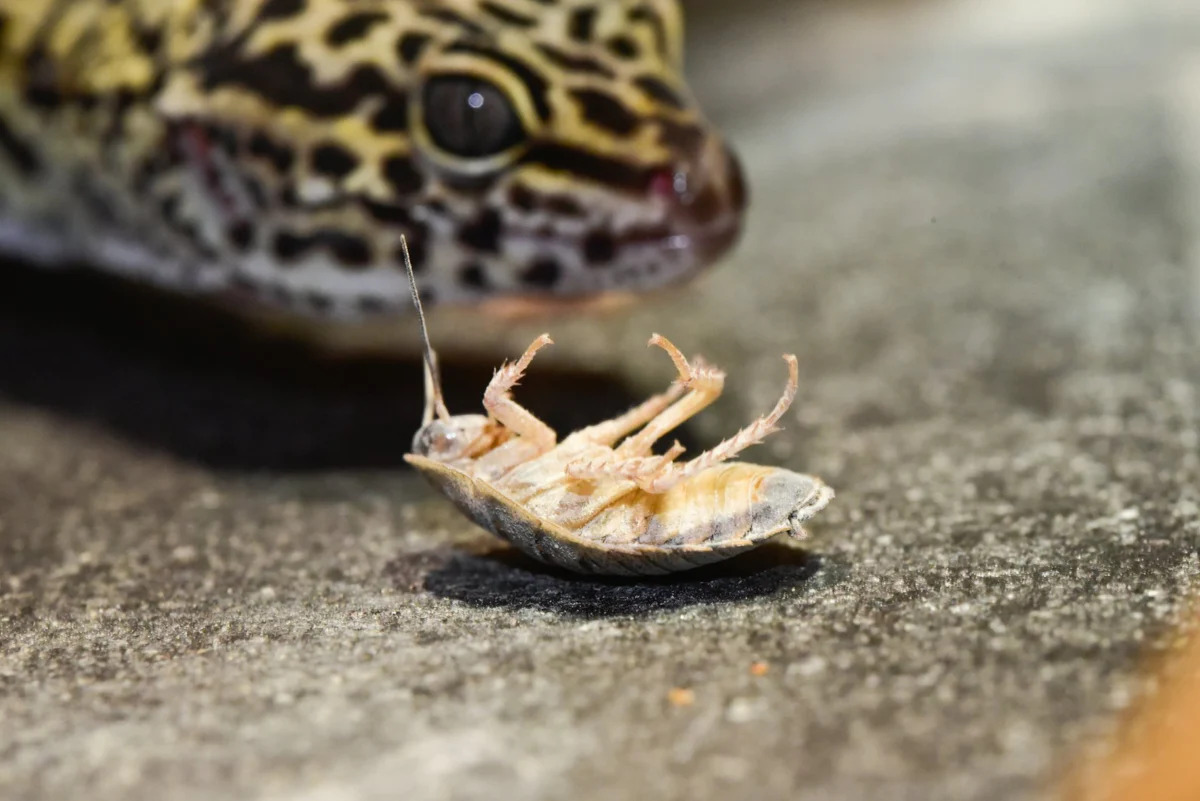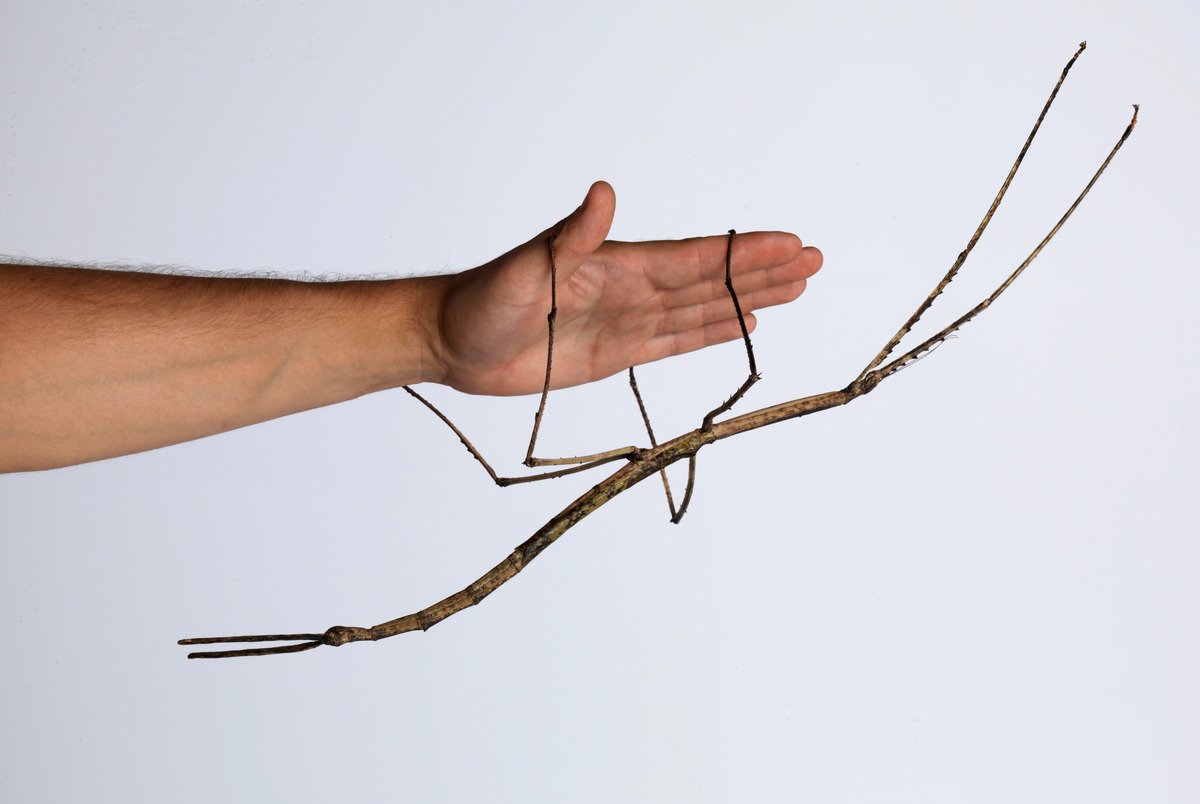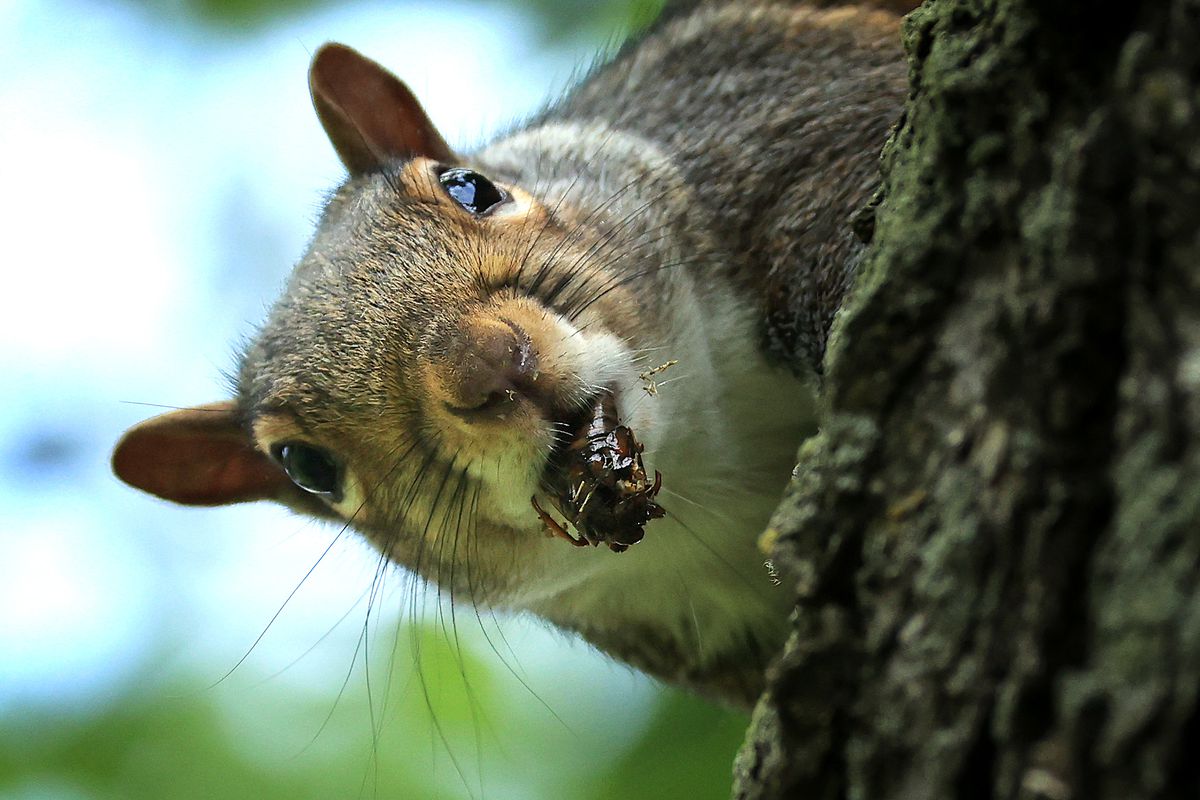Home>Gardening News and Trends>Latest News>What Insects Do Woodpeckers Eat
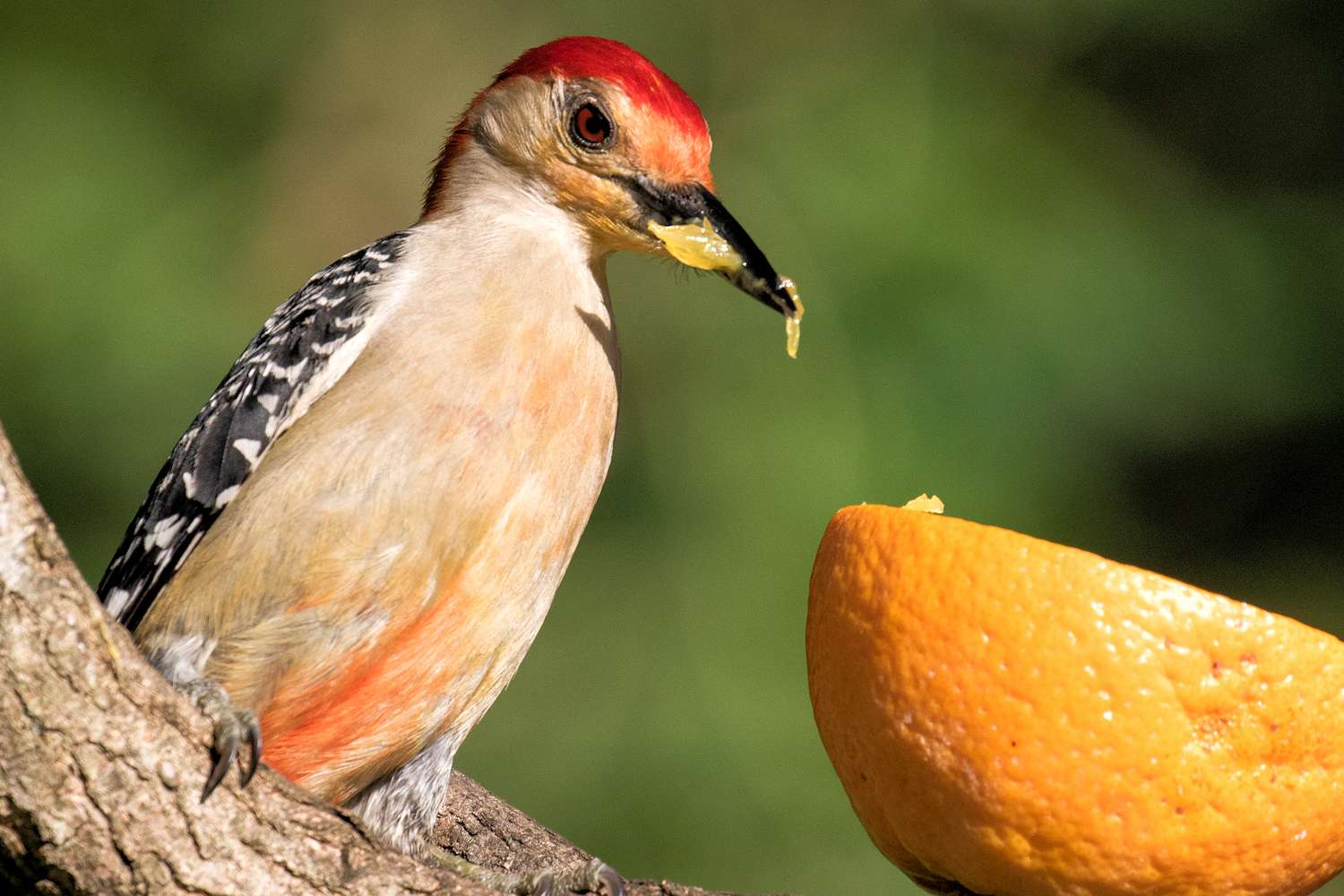

Latest News
What Insects Do Woodpeckers Eat
Modified: January 22, 2024
Discover the Latest News about woodpeckers and the insects they eat. Learn more about their feeding habits and ecological importance.
(Many of the links in this article redirect to a specific reviewed product. Your purchase of these products through affiliate links helps to generate commission for Chicagolandgardening.com, at no extra cost. Learn more)
Table of Contents
Introduction
Welcome to the fascinating world of woodpeckers and their diet! Woodpeckers are well-known for their unique ability to tap or drum on trees, but have you ever wondered what these remarkable birds eat? In this article, we will explore the various insects that woodpeckers feed on to sustain their energy and survive in their natural habitats.
Woodpeckers are a diverse group of birds that can be found in forests, woodlands, and even urban environments. They possess specialized anatomical features that allow them to forage for food in a highly efficient manner. Their strong beaks and long, sharp tongues are specifically adapted to extract insects from various hiding places within trees.
These avian creatures have a varied diet, but one of their primary sources of nutrition comes from insects. Woodpeckers are considered to be insectivorous birds, meaning they predominantly feed on insects. They play a crucial role in maintaining the balance of insect populations in ecosystems by preying on different species of insects found on or inside trees.
Woodpeckers have developed specific foraging techniques to access their prey. They use their powerful beaks to create holes or cavities in a tree’s bark, exposing the hidden insects beneath the surface. Once the insects are detected, the woodpecker uses its long and sticky tongue to capture them. This feeding strategy allows them to target a wide range of insects, including those that may be inaccessible to other birds.
It’s important to note that woodpeckers are also opportunistic feeders, meaning they are adaptable and will consume other food sources when insects are less abundant. This could include fruits, berries, nuts, and even small amphibians or reptiles. However, insects remain a vital and preferred food source for woodpeckers due to their high protein content and abundance.
In the following sections, we will delve deeper into the specific types of insects that woodpeckers find most appealing. From wood-boring insects and beetle larvae to ants, termites, and even spider eggs, you’ll discover the diverse menu of woodpeckers and gain a deeper appreciation for their important ecological role.
Woodpecker Diet: An Overview
Woodpeckers have a wide-ranging diet that primarily consists of insects. These energetic birds have evolved unique feeding strategies and anatomical features to access and capture their favorite prey. While their diet may include other food sources, insects remain a crucial component of their overall nutrition.
Woodpeckers are skilled at locating and extracting insects from various hiding places in trees. They often search for larvae, pupae, and beetles that tunnel through the wood of trees. By tapping, drumming, and chiseling into tree bark, woodpeckers expose these wood-boring insects, making them an easily accessible meal. Some common wood-boring insects that are part of a woodpecker’s diet include carpenter ants, wood-boring beetles, and termites.
Woodpeckers also feed on insect eggs, such as those laid by spiders or other insects. These tiny protein-packed morsels provide a valuable food source for woodpeckers, especially during breeding seasons when they need an extra boost of energy. They are skilled at locating and extracting eggs hidden in crevices and cracks within tree bark.
Another favorite food source for woodpeckers is spider and insect larvae. These juicy morsels are easy to extract and provide a high protein content. Woodpeckers use their long, barbed tongues to capture the larvae, which often reside under the bark or within chambers of trees.
Wood-boring bees and wasps are also on the menu for woodpeckers. These insects construct tunnels within wood, providing both a home and a food source for some species of woodpeckers. By chiseling into a tree, woodpeckers can access these insects and enjoy a protein-rich meal.
While insects make up a significant portion of their diet, woodpeckers are also known to feed on other creatures. They will eat grasshoppers, crickets, caterpillars, and even small reptiles or amphibians when available. In times when insect populations are scarce or during the colder months, woodpeckers may also rely on other food sources, such as fruits, nuts, and berries.
Woodpeckers are fascinating birds with a diet that revolves around insects, but they are also opportunistic eaters, adapting to different food sources depending on availability. Their ability to sustain themselves through a diverse range of food sources showcases their adaptability and resourcefulness in the wild.
Wood-Boring Insects
Wood-boring insects play a significant role in the diet of many woodpecker species. These insects, as their name suggests, tunnel and bore into the wood of trees, making them an abundant and easily accessible food source for woodpeckers. Several types of wood-boring insects contribute to the woodpecker’s diet, including carpenter ants, wood-boring beetles, and termites.
Carpenter ants are a common prey item for woodpeckers. These large ants excavate galleries within the wood, creating smooth tunnels where they construct nests. The tapping and drumming behavior of woodpeckers can arouse the ants’ defensive response, causing them to send out workers to investigate. Woodpeckers exploit this opportunity by capturing the ants as they emerge from the tunnels, providing a ready and nutritious source of food.
Wood-boring beetles, such as the round-headed or flat-headed varieties, are also favored by woodpeckers. These beetles lay their eggs in tree bark or timber, and when the larvae hatch, they bore into the wood and feed on it. The burrows left by the beetle larvae serve as a clear sign to woodpeckers that a meal awaits them. The birds will chip away at the bark and wood to reach these tasty morsels, extracting them with their versatile tongues.
Termites are another wood-boring insect that woodpeckers seek out. These social insects construct intricate tunnels and galleries within the wood, forming their colonies. Woodpeckers skillfully locate these termite galleries, tapping on the wood to elicit the termites’ defense response. As the termites emerge to protect their colony, the woodpeckers quickly seize the opportunity to snatch them up with their beaks or tongues.
The abundance of wood-boring insects in trees provides an ample food source for woodpeckers, allowing them to sustain themselves and thrive in their habitats. By targeting these insects, woodpeckers contribute to the control of insect populations, maintaining the health and balance of the ecosystem.
Larvae and Pupae
Woodpeckers have a particular fondness for larvae and pupae, which are the immature stages of various insects. These protein-rich morsels provide an abundant and easily accessible food source for woodpeckers, making them an important part of their diet.
Larvae, also known as caterpillars, are a favorite among many woodpecker species. Caterpillars are the larval stage of moths and butterflies. They often feed on leaves and foliage, making them conspicuous prey for woodpeckers. These birds use their sharp beaks to chisel through the bark or wood to reach these juicy larvae hiding in chambers or under the bark. The ability to extract caterpillars from their hiding places showcases the woodpecker’s adaptability and resourcefulness as a forager.
Woodpeckers also target the pupae of insects, which are the developing stages between larvae and adults. Pupae are typically enclosed in protective casings, such as cocoons or chrysalises. Woodpeckers are adept at locating these pupae, often hidden within small crevices or chambers in the tree. By tapping and probing the wood, woodpeckers can locate and extract these pupae, providing a nutritious meal.
The consumption of larvae and pupae by woodpeckers serves multiple purposes. It not only offers a significant source of energy and nutrients for the birds but also helps control the population of potential pests. By feeding on these immatures stages of insects, woodpeckers play a vital role in regulating insect populations, contributing to the overall health and balance of the ecosystem.
It’s worth mentioning that woodpeckers are skilled at identifying which larvae and pupae are palatable and safe to consume. Some woodpecker species have learned to avoid toxic or unappetizing caterpillars by relying on visual cues, such as bright colors or specific body markings.
In their quest for larvae and pupae, woodpeckers demonstrate their remarkable foraging abilities and adaptability. Their specialized beaks and tongues allow them to extract these hidden treasures from their natural hiding places within trees and contribute to the dynamic ecological interaction between predators and prey.
Beetles
Beetles are a diverse group of insects that make up a significant portion of a woodpecker’s diet. These insects come in various shapes, sizes, and species, and woodpeckers are skilled at locating and capturing them for a delicious meal.
Woodpeckers primarily target wood-boring beetles, which lay their eggs in tree bark or timber. As the eggs hatch, the beetle larvae burrow into the wood and feed on it, creating characteristic tunnels. Woodpeckers recognize these signs and use their strong beaks to chip away at the bark and expose the beetle larvae underneath.
Woodpeckers employ their specialized tongues to extract the beetle larvae from their wooden hiding places. Their long and sticky tongues can reach deep into the tunnels to retrieve the larvae, ensuring a tasty and protein-rich meal. By targeting wood-boring beetles, woodpeckers not only satisfy their hunger but also contribute to the control of beetle populations, preventing potential damage to trees and forests.
Aside from wood-boring beetles, woodpeckers also feed on other beetle species. Some beetles are found on the surface of trees or within crevices, making them accessible to woodpeckers through probing and pecking. These include leaf beetles, ground beetles, and weevils, among others.
The diet of woodpeckers isn’t limited to specific beetle species but is rather opportunistic, depending on the availability and abundance of different beetles in their environment. Woodpeckers demonstrate their adaptability by adjusting their feeding behavior to the beetle species that are prevalent at a given time and location.
Beetles provide numerous benefits as a food source for woodpeckers. They are nutrient-rich, offering a high protein content that supplies energy for the birds’ activities and metabolic needs. Additionally, by preying on beetles, woodpeckers contribute to the natural balance of insect populations, helping to maintain the health and vitality of ecosystems they inhabit.
Overall, beetles play a vital role in the woodpecker’s diet, providing a diverse array of options for these fascinating birds. Their ability to locate and extract these insects from various areas within trees highlights the woodpecker’s adaptability and resourcefulness as skilled foragers.
Ants and Termites
Ants and termites are among the favorite prey of woodpeckers. These social insects can be found in large colonies and construct intricate tunnel systems, making them an abundant and easily accessible food source for woodpeckers.
Carpenter ants are a common target for woodpeckers. These large ants excavate galleries within the wood, creating smooth tunnels where they construct their nests. Woodpeckers use their tapping and drumming behavior to arouse the ants’ defensive response and elicit their emergence from the nests. This provides an opportunity for woodpeckers to capture the ants, which are a rich source of protein and nutrients.
Termites, another social insect, also serve as a delectable meal for woodpeckers. Termites build extensive tunnel systems within trees, where they live and feed on wood. The tapping and probing actions of woodpeckers can stimulate the termites to respond by emerging from their tunnels, making them vulnerable to predation. Woodpeckers capitalize on this by swiftly capturing the termites with their beaks or capturing them with their long, barbed tongues.
Woodpeckers have developed specialized techniques to access ants and termites. Their strong beaks allow them to break through the outer layers of bark or wood to reach the insect colonies beneath. Once they have exposed the ants or termites, woodpeckers use their agile tongues to seize and extract their prey from the tunnels or galleries.
The consumption of ants and termites by woodpeckers not only provides a nutritious food source but also contributes to the control of these insect populations. Woodpeckers play a valuable role in regulating the number of ants and termites in their environment, helping to maintain the health and balance of ecosystems.
It’s worth noting that while woodpeckers primarily target carpenter ants and termites, they may also feed on other ant species and termite genera that share a similar habitat. Their ability to adapt their feeding behavior to the prevailing ant or termite species showcases their flexibility and resourcefulness as opportunistic foragers.
By targeting ants and termites, woodpeckers exemplify their ecological significance as they help control the population of these insects, contributing to the overall health and stability of the ecosystems they inhabit.
Insect Eggs
In addition to targeting adult insects, woodpeckers also have a keen eye for insect eggs. These tiny, often inconspicuous structures serve as an important food source for these birds, especially during breeding seasons when they require an extra source of energy.
Woodpeckers are adept at locating and extracting insect eggs, which can be found in various hidden places, including crevices, cracks, and underneath the bark of trees. Through their tapping and probing behavior, woodpeckers can uncover these well-camouflaged eggs and seize the opportunity to indulge in a protein-packed meal.
Spiders, for example, lay their eggs in silk sacs, which are typically attached to tree branches or woven into the strands of a web. Woodpeckers can detect the presence of these egg sacs through their acute vision and use their beaks or tongues to pluck them off and consume the eggs enclosed within. By targeting spider eggs, woodpeckers not only satisfy their hunger but also help regulate spider populations.
Woodpeckers also seek out the eggs of other insects, such as beetles, moths, and butterflies. These eggs may be tucked away in crevices or held in place by adhesive substances secreted by the female insect. Woodpeckers use their beaks to carefully extract the eggs one by one, ensuring they get a nutritious meal.
Insect eggs provide an excellent source of protein and nutrients for woodpeckers. They are often rich in lipids, which are essential for the birds’ energy requirements and overall health. Additionally, by preying on insect eggs, woodpeckers contribute to the regulation of insect populations, serving as an important biological control mechanism in their ecosystems.
Woodpeckers’ ability to locate and consume insect eggs showcases their resourcefulness as foragers. They have honed their skills to identify and extract these tiny, yet valuable, food sources, allowing them to thrive and contribute to the ecological balance of their habitats.
It is fascinating to observe the fine-tuned foraging techniques woodpeckers employ when hunting for insect eggs, demonstrating their adaptability and the intricate web of interactions that exist in the natural world.
Spider and Insect Larvae
Woodpeckers have an affinity for spider and insect larvae, which provide a rich source of protein and nutrients. These juicy, wriggling morsels offer a tasty and energy-packed meal, making them a favored prey item for woodpeckers.
Spider larvae, often found hidden within silk sacs or webs, are a delicacy for woodpeckers. Woodpeckers use their sharp beaks to dislodge these sacs or break apart the web to access the spider larvae within. Their long, barbed tongues come into play as they extract these tiny morsels from the silk or webbing, consuming them with gusto.
Insect larvae, such as the larvae of beetles, flies, and moths, also comprise a significant part of the woodpecker’s diet. These larvae are often found burrowing in the wood of trees or residing in chambers or crevices. Woodpeckers use their beaks to chip away at the bark or wood to reach these hidden larvae. With their agile tongues, they pluck the larvae from their hiding places, consuming them with efficiency and precision.
Woodpeckers’ preference for spider and insect larvae can be attributed to the high nutritional value they offer. Larvae are rich in proteins and fats, providing essential nutrients for the woodpeckers’ growth, reproduction, and daily activities. By selectively targeting larvae, woodpeckers secure a reliable source of sustenance that fuels their energetic lifestyle.
Additionally, by consuming spider and insect larvae, woodpeckers contribute to the control of insect populations. Larvae have the potential to mature into adult insects and reproduce, so by preying on them, woodpeckers help maintain a balance between predator and prey in their ecosystems.
The ability of woodpeckers to locate and extract spider and insect larvae demonstrates their adaptability and specialized foraging techniques. Their sharp beaks and long, sticky tongues are finely tuned to capture these tiny creatures, ensuring a steady supply of food for these remarkable birds.
Observing woodpeckers in action as they hunt for spider and insect larvae offers a glimpse into the intricate dynamics of predator-prey interactions in nature. It highlights the intricate web of life that exists within trees and underscores the important role that woodpeckers play as predators in their ecosystems.
Wood-Boring Bees and Wasps
In addition to targeting wood-boring insects and their larvae, woodpeckers also have a taste for wood-boring bees and wasps. These buzzing insects construct tunnels within wood, providing both a home and a food source for certain woodpecker species.
Wood-boring bees, such as carpenter bees, are a favorite prey item for woodpeckers. These bees excavate tunnels in dead or decaying wood, where they lay their eggs and store food. Woodpeckers readily identify these bee tunnels and use their beaks to chisel into the wood, exposing the bees inside. With their sharp and sturdy beaks, woodpeckers capture the bees in mid-air or directly from their hiding spots, relishing in this protein-rich meal.
Similarly, woodpeckers also target wood-boring wasps, such as horntails and gall wasps. These wasps construct tunnels within wood as well, where they lay their eggs and provide a suitable environment for their development. Woodpeckers detect the presence of these wasp larvae and use their beaks and tongues to extract them from the wood, enjoying a nutritious feast.
Wood-boring bees and wasps offer a substantial food source for woodpeckers. Their larvae are packed with proteins and fats, providing the woodpeckers with the energy they need to sustain their demanding lifestyles. By preying on these insects, woodpeckers contribute to the natural control of bee and wasp populations and help maintain the health and balance of their ecosystems.
Woodpeckers’ ability to efficiently locate and capture wood-boring bees and wasps showcases their resourcefulness and adaptability as foragers. They have honed their skills to take advantage of the abundant food source these buzzing insects provide within the tree bark and wood.
Observing woodpeckers in action as they extract wood-boring bees and wasps highlights the intricate relationships that exist between predators and their prey in the natural world. It serves as a reminder of the vital role that woodpeckers play in maintaining the ecological balance of their habitats.
Grasshoppers and Crickets
While woodpeckers are primarily known for their knack for locating and capturing insects within wood, they are also opportunistic feeders, and this includes targeting grasshoppers and crickets. These hopping insects serve as a welcomed variation in the woodpecker’s diet and provide an additional source of protein.
Grasshoppers and crickets are frequently found in grassy areas and vegetation, making them easily accessible to woodpeckers. The birds use their keen eyesight to spot these hopping prey and swoop down to capture them mid-air or from the ground. The woodpecker’s sharp beak is well-equipped to deliver a precise strike, ensuring a successful hunt.
Woodpeckers benefit from the abundance of grasshoppers and crickets during warmer months when these insects thrive in open areas. The protein-rich content within grasshoppers and crickets helps woodpeckers meet their energy needs and maintain their active lifestyles.
The ability of woodpeckers to diversify their diet by including grasshoppers and crickets highlights their adaptability as foragers. They possess the agility and quick reflexes necessary to capture these agile insects, effectively expanding their food options and optimizing their nutritional intake.
Furthermore, by feeding on grasshoppers and crickets, woodpeckers contribute to keeping their populations in check. These insects are known for their voracious appetites and can multiply rapidly, which can have negative impacts on vegetation and crops. The woodpeckers’ predation helps mitigate the potential ecological consequences of unchecked grasshopper and cricket populations.
Observing woodpeckers in pursuit of grasshoppers and crickets is a testament to the diverse and dynamic interactions that exist within ecosystems. It serves as a reminder of the intricate web of life where each species plays a unique role in maintaining the delicate balance of nature.
Caterpillars
One of the favorite prey items for woodpeckers is caterpillars, the larval stage of moths and butterflies. Caterpillars are rich in proteins and fats, making them a highly nutritious food source for these birds.
Caterpillars can be found on various parts of plants, including leaves, stems, and branches. Woodpeckers are adept at locating and capturing these crawling larvae. With their strong beaks, woodpeckers can pry open bark or break through plant material to access caterpillars hiding underneath.
Woodpeckers employ their long, barbed tongues to extract caterpillars from their hiding places. Their tongues are equipped with sticky saliva, allowing them to easily snatch up the caterpillars. These protein-rich morsels provide woodpeckers with the energy they need for their daily activities and metabolic processes.
Woodpeckers demonstrate their adaptability when it comes to caterpillars. They are capable of adjusting their feeding behavior based on the type and size of caterpillars available. Some woodpecker species may target specific caterpillars that are more abundant or easier to capture, while others may have a more diverse and opportunistic feeding approach.
The consumption of caterpillars by woodpeckers also has ecological implications. Caterpillars are herbivores and can cause significant defoliation to plants. By preying on caterpillars, woodpeckers help regulate their populations and prevent extensive damage to vegetation. This predator-prey relationship contributes to the overall health and balance of ecosystems.
Woodpeckers’ ability to locate and capture caterpillars demonstrates their resourcefulness and specialized foraging techniques. Their sharp beaks and barbed tongues are finely tuned to seize these crawling larvae, ensuring a consistent and nutrient-rich food supply for these remarkable birds.
Observing woodpeckers as they search for and consume caterpillars provides a window into the dynamic interactions that shape ecosystems. It underscores the crucial role that woodpeckers play as predators in maintaining the delicate balance of nature.
Flies and Mosquitoes
Woodpeckers are not just limited to feeding on wood-boring insects and larvae; they also enjoy the occasional feast of flies and mosquitoes. While flies and mosquitoes are small, they can be abundant in certain environments and provide a valuable source of sustenance for woodpeckers.
Flies, such as houseflies, fruit flies, and horse flies, are common targets for woodpeckers. These flying insects are often found buzzing around in open spaces or around decaying matter. Woodpeckers use their keen eyesight and aerial agility to capture flies on the wing or from the ground.
Mosquitoes are also on the menu for woodpeckers. These pesky blood-suckers are abundant in areas with standing water, and woodpeckers take advantage of their presence. They use their sharp beaks and swift movements to snatch mosquitoes mid-flight or pluck them off leaves or other surfaces.
While flies and mosquitoes may be small in size, they can be a rich source of protein and nutrients for woodpeckers. They offer a convenient and easily accessible food source that helps to supplement the woodpeckers’ diet and contribute to their overall energy requirements.
By feeding on flies and mosquitoes, woodpeckers also play a beneficial role in the ecosystem. These insects can be annoying pests that bother humans and other animals. Woodpeckers help control their populations, reducing the nuisance and potential public health risks associated with these biting insects.
Woodpeckers’ ability to snatch flies and mosquitoes in mid-air showcases their aerial dexterity and hunting skills. They demonstrate their adaptability as foragers by incorporating these smaller, flying insects into their diet when opportunities arise.
Observing woodpeckers capturing flies and mosquitoes serves as a reminder of the intricate interactions that exist within ecosystems. It highlights the woodpeckers’ role as efficient predators and their contribution to maintaining the balance and harmony of their natural habitats.
Conclusion
Woodpeckers are remarkable birds with a diverse and adaptive diet that revolves around insects. They play a crucial ecological role by preying on a wide range of insects found on or inside trees, helping to control insect populations and maintain the health and balance of ecosystems.
From wood-boring insects like carpenter ants, beetles, and termites to spider and insect larvae, woodpeckers possess specialized anatomical features and foraging techniques that allow them to extract their preferred prey from various hiding places within trees. They also target wood-boring bees and wasps, grasshoppers, crickets, caterpillars, flies, mosquitoes, and more.
Woodpeckers’ adaptability as opportunistic feeders is evident in their diet. They adjust their feeding behavior based on the availability and abundance of different insect species, as well as other food sources like fruits, nuts, and berries when insects are less plentiful.
Through their feeding habits, woodpeckers contribute to the natural balance of ecosystems. They help control insect populations, preventing potential damage to trees and vegetation, and reducing the nuisance of pests like mosquitoes and flies. Woodpeckers also serve as ecological indicators, as the health and abundance of insect prey species can reflect the overall ecosystem dynamics.
The intricate and dynamic interactions between woodpeckers and their insect prey highlight the complexities of nature. From tapping and drumming to chiseling and probing, woodpeckers employ a range of specialized behaviors and anatomical adaptations to secure their next meal.
Next time you hear the distinct drumming of a woodpecker or witness its acrobatic foraging techniques, take a moment to appreciate the incredible hunting skills and the vital ecological role these birds play. Woodpeckers are not only fascinating creatures but also valuable contributors to the delicate balance of our natural world.


